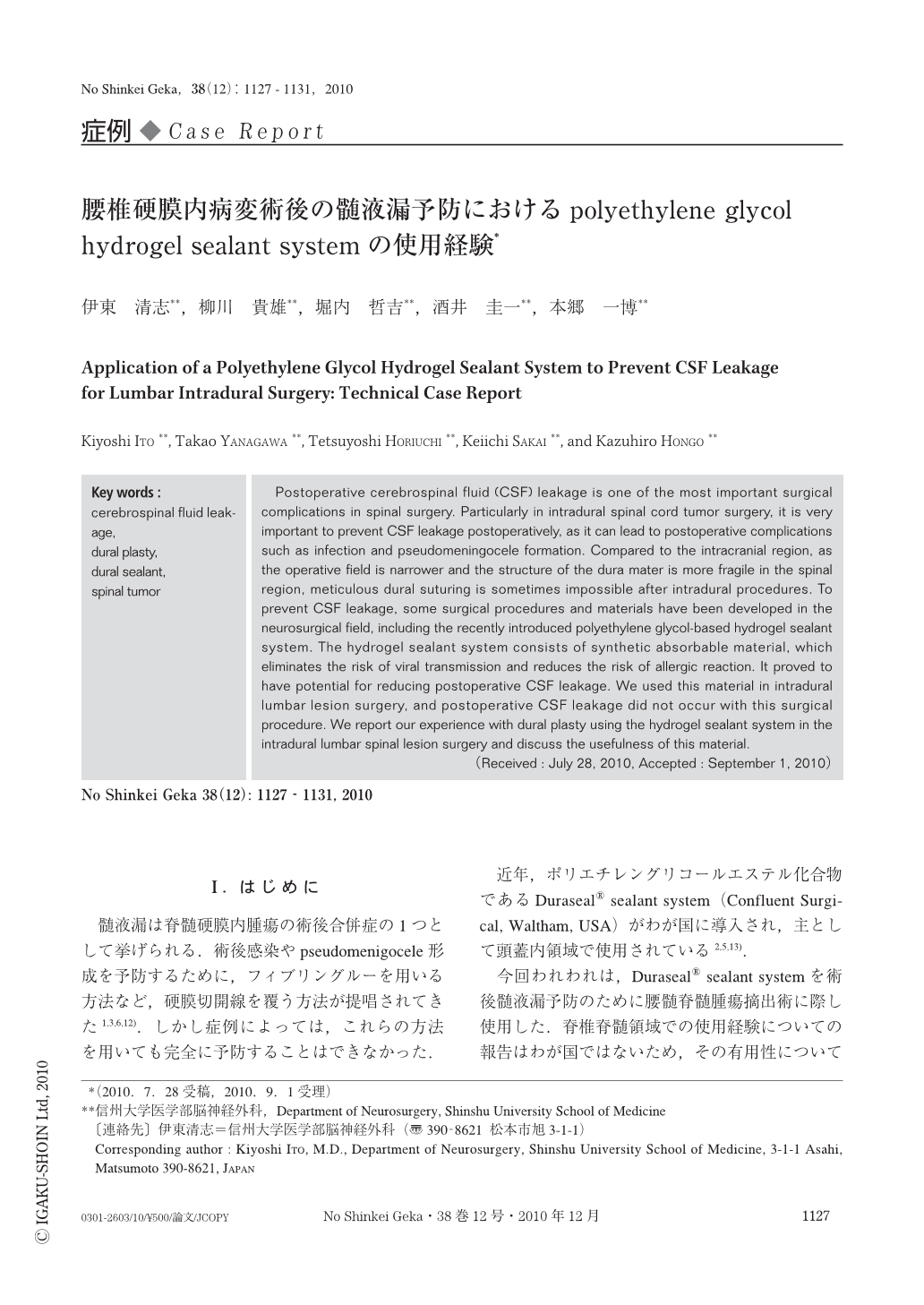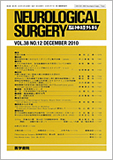Japanese
English
- 有料閲覧
- Abstract 文献概要
- 1ページ目 Look Inside
- 参考文献 Reference
Ⅰ.はじめに
髄液漏は脊髄硬膜内腫瘍の術後合併症の1つとして挙げられる.術後感染やpseudomenigocele形成を予防するために,フィブリングルーを用いる方法など,硬膜切開線を覆う方法が提唱されてきた1,3,6,12).しかし症例によっては,これらの方法を用いても完全に予防することはできなかった.
近年,ポリエチレングリコールエステル化合物であるDuraseal® sealant system(Confluent Surgical, Waltham, USA)がわが国に導入され,主として頭蓋内領域で使用されている2,5,13).
今回われわれは,Duraseal® sealant systemを術後髄液漏予防のために腰髄脊髄腫瘍摘出術に際し使用した.脊椎脊髄領域での使用経験についての報告はわが国ではないため,その有用性について報告する.
Postoperative cerebrospinal fluid (CSF) leakage is one of the most important surgical complications in spinal surgery. Particularly in intradural spinal cord tumor surgery,it is very important to prevent CSF leakage postoperatively,as it can lead to postoperative complications such as infection and pseudomeningocele formation. Compared to the intracranial region,as the operative field is narrower and the structure of the dura mater is more fragile in the spinal region,meticulous dural suturing is sometimes impossible after intradural procedures. To prevent CSF leakage,some surgical procedures and materials have been developed in the neurosurgical field,including the recently introduced polyethylene glycol-based hydrogel sealant system. The hydrogel sealant system consists of synthetic absorbable material,which eliminates the risk of viral transmission and reduces the risk of allergic reaction. It proved to have potential for reducing postoperative CSF leakage. We used this material in intradural lumbar lesion surgery,and postoperative CSF leakage did not occur with this surgical procedure. We report our experience with dural plasty using the hydrogel sealant system in the intradural lumbar spinal lesion surgery and discuss the usefulness of this material.

Copyright © 2010, Igaku-Shoin Ltd. All rights reserved.


